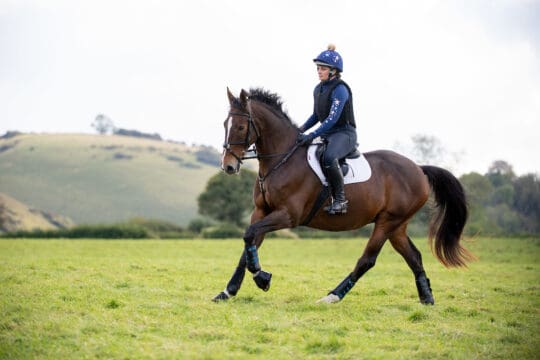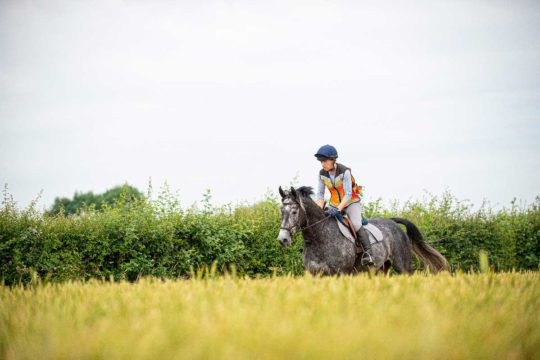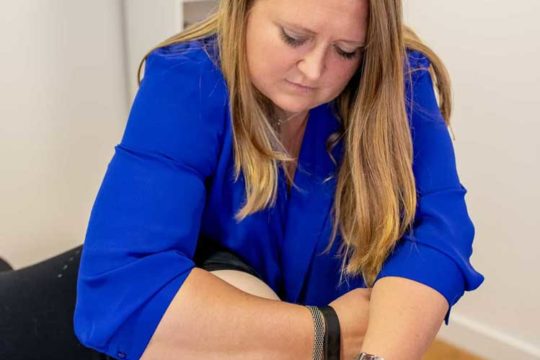Kickstart your fitness with easy-to-follow programmes from our expert, Lottie Lodge
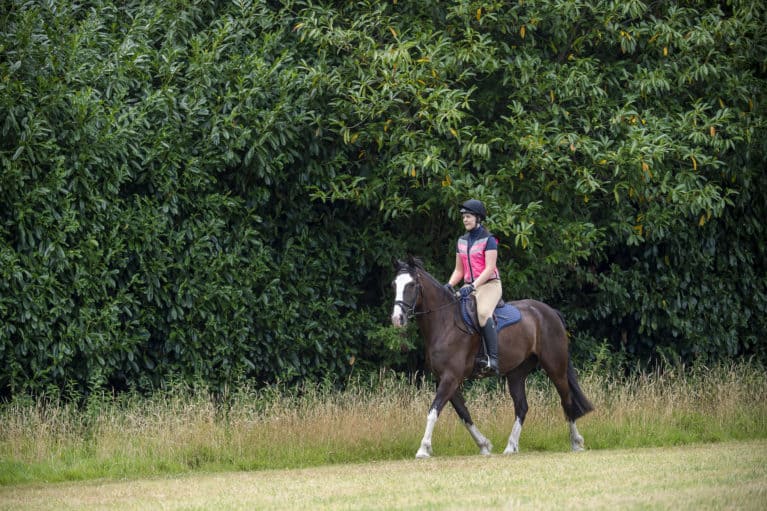
Lottie Lodge BSc MSc is a sports rehabilitator. She currently works for the military as an exercise rehabilitation instructor. She has previously worked in rugby up to Championship level and has ridden throughout her life across all the disciplines.
Often, riders don’t see themselves as athletes. But, despite this, all disciplines pose significant strength, endurance and cardiovascular challenges to you – just think how demanding maintaining a forward seat around a cross-country course can be, and how your legs can ache after a no-stirrup session in the arena. With this in mind, it makes sense that the fitter you are the better you can maintain your riding performance. The best part? You don’t need to commit to a gym membership to see a difference.
Getting started
You can begin your session with pre-activation exercises that work a specific area of your body to attune your mind and nervous system to a particular muscle group. For riders, the gluteus medius (GMed) is a muscle that sits on your hip – using a GMed clam, as detailed in programme 1a, to activate this muscle will assist in controlling your pelvis, trunk and lower limb position throughout your workout.
Generally, programmes begin with power exercises, such as box jumps, that require maximum energy output. Follow these with compound lifts – strength exercises that work numerous muscle groups at a time, such as squats. Then, work through isolation exercises that strengthen specific muscle groups where you know you have a weakness, such as leg extensions for quad strengthening.
However you choose to work out, the exercises you pick should reflect your training goals – the tests detailed in Fitter horse, fitter you part one will help you identify weaknesses which form training goals. Training parameters highlighted in Fitter horse, fitter you part two will help you train the specific type of weaknesses – such as muscle strength or endurance – increasing your programme effectiveness.
Here’s an example of one programme you can use…
GMed Clam – 12 reps, three sets and 30 second rest. This is a pre-activation exercise that strengthens the GMed, which works to stabilise the pelvis and trunk and control lower limb position.
How: Lie on your side, keeping your hips stacked and feet touching. Lift your top knee away without rotating trunk. Keep the sets low so you don’t reach early fatigue. If you have a strength deficit, perform an additional set on your weaker side.
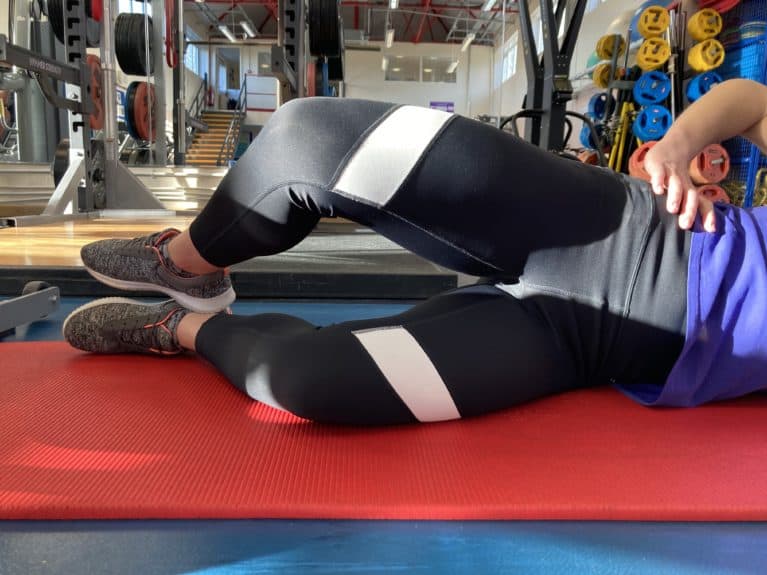
Squat variation – 10 reps, four sets and 90 seconds rest. This is a compound lift that strengthens your quads and glutei. It’s great for overall ankle, knee, hip and back health.
How: Lower your body as if sitting on a chair, keeping your weight through your heels. To make it harder, you can slow the tempo of your reps – slower lowering will target your quads, while holding at the bottom of the squat will work your glutes.
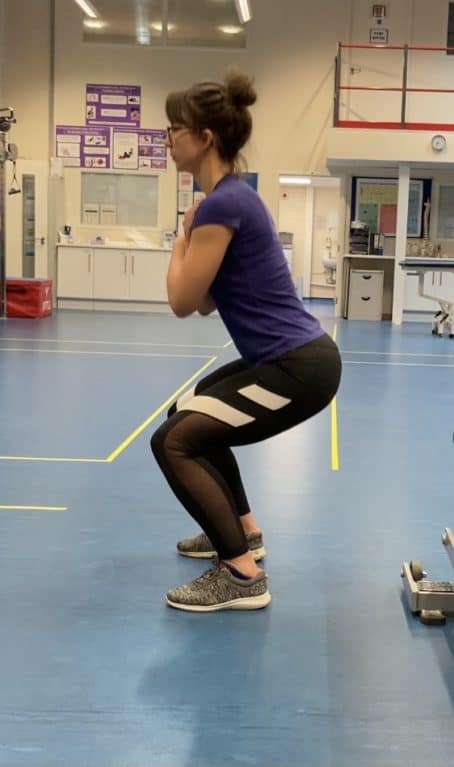
Reverse lunge with a single arm weight hold – 8 reps, four sets and 90 seconds rest. Another compound lift, this one is a hip-dominant hamstring exercise that helps improve strength, balance and flexibility. The single arm hold causes your trunk muscles to work against side bending and increases GMed activation.
How: Keep your weight predominately in your front leg (chest over your front knee). Feel the same muscles activate as in the clam exercise to keep your foot in a neutral position and knee over toe (not allowing your knee to travel inwards). The hand weight needs to be sufficient to that you can feel it activating your trunk. You can make it tougher by increasing the weight, slowing the speed of lowering or holding at the bottom. Perform an additional set on your weaker side if applicable.
Step up with overhead press – 12-15 reps, three sets and 60 seconds rest. This is a compound lift, which activities the glutes with the step while the overhead press works your trunk and core.
How: Push predominately through the heel of your front leg to step up, then use this energy you have created to pass up through your trunk and cause the weight to press overhead. Lower down to starting position using your hip muscles to control your leg position (neutral foot and knee over toe) as in the lunge exercise. Resistance must be sufficient that force from lower limb is required to press weight overhead – this isn’t an isolated upper body press, but a whole body movement. Increase the weight and reps to make this exercise harder.
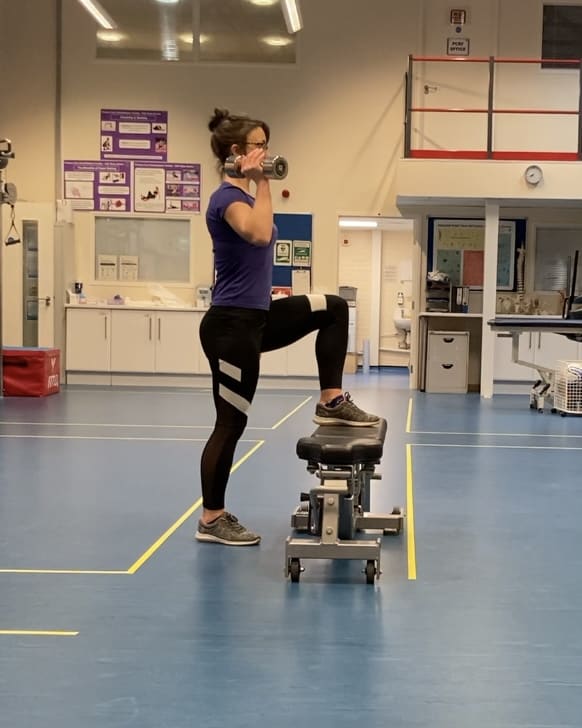
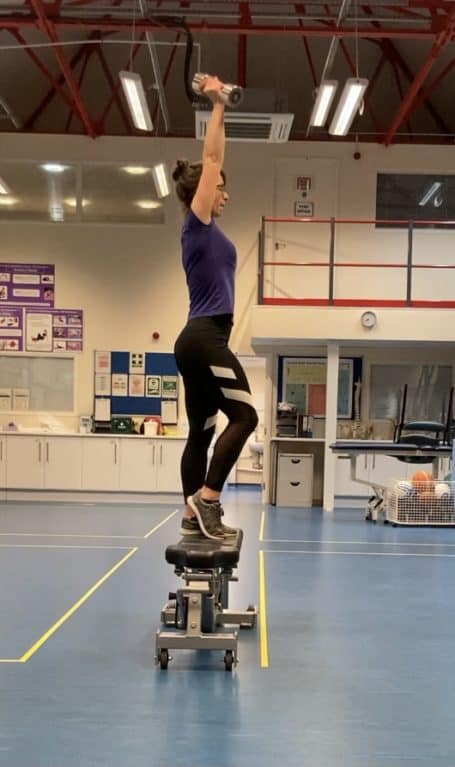
Bent leg calf raise – repeat until fatigued, three sets and 60 seconds rest. An isolation exercise that conditions the soleus muscle. This sits is at the back of your lower leg, which sustains a high load while you ride.
How: Rise up on your toes and slowly lower back down, maintaining knee flexion throughout. You can perform double or single leg – if you have a weaker side perform single leg with an additional set on your weaker side.
Here’s another example programme to try…
Dead bug – four reps, three sets and 30 seconds rest. A pre-activation exercise that conditions your trunk while strengthening and lengthening your hip flexors.
How: Lie flat on your back, raising your arms above your torso and lifting your hips and knees to 90°. Lower your opposite arm and leg to the floor, straightening your leg in the process – don’t allow your back to arch away from the floor.
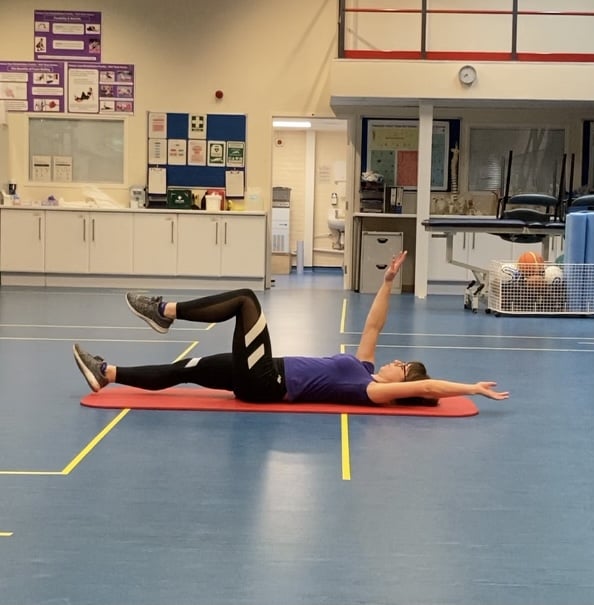
Glute thrust – 8-10 reps, five sets and 90 seconds rest. This compound lift strengthens your glute muscles.
How: Make sure head and shoulder are supported. Drive your hips up through your heels until they’re in line with your chest. Don’t arch your back. Slowly lower your bottom half way to the floor before pushing through your heels to lift once again.
Make it harder by slowing the tempo of your reps – a slow lower or a sustained hold at the top further emphasises your glutes. Once accustomed to the exercise, add resistance (a weight held on your tummy or a barbell across your hips). Modify parameters accordingly, such as gradually reducing towards four sets of six, with 120 secs rest between sets as your resistance increases.
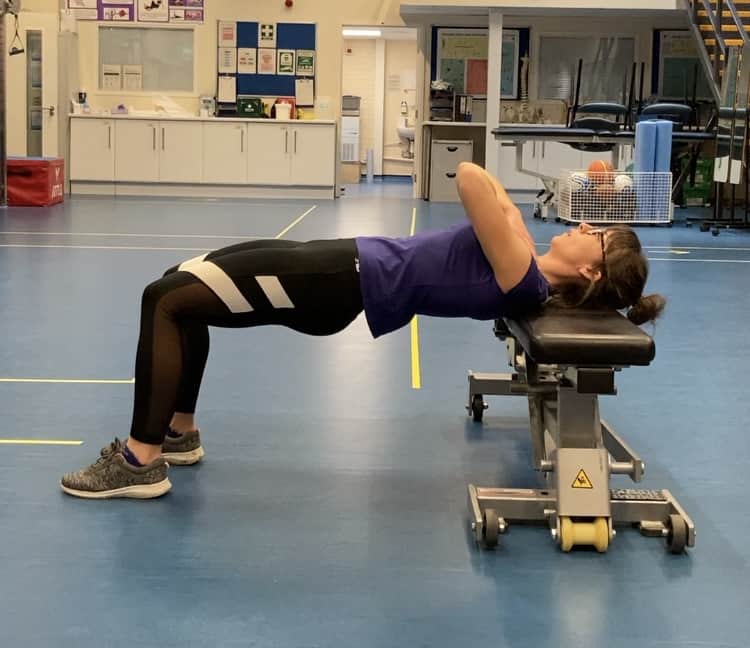
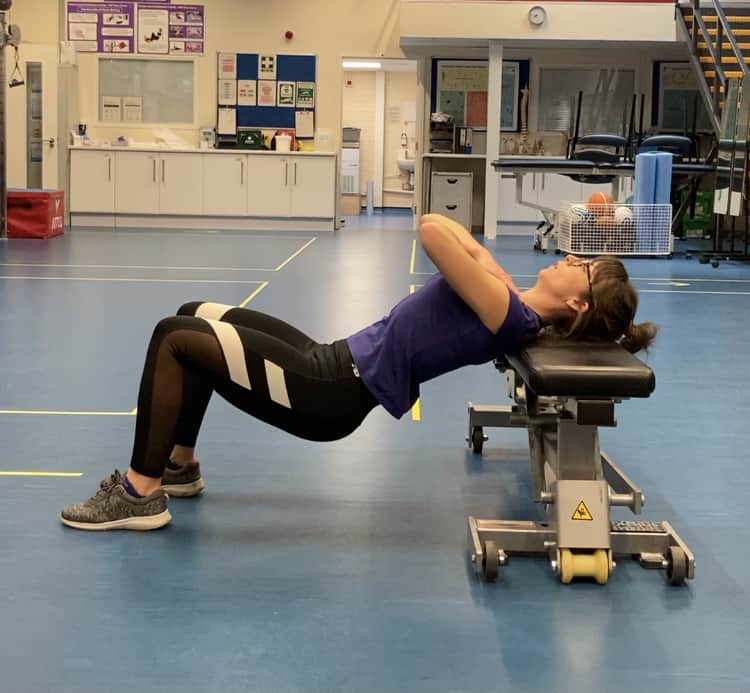
Split squat or pallof hold – 10-12 sets, three sets and 60 seconds rest. Another compound lift to load your glutes, acting on the adductor and lateral hip muscles to stabilise your lower limb. Meanwhile the pallof hold stabilises your trunk.
With your weight predominately in your front leg – this time your trunk is lowered down between your two legs, remaining very upright. Don’t return to standing every rep, just lower and raise your body – your feet remain in place until the end of the set. Hold your arms outstretched with no bend, the muscles on the opposite side of your trunk to the band work against rotation. Slow the tempo of reps and hold at the bottom for more glute emphasis.
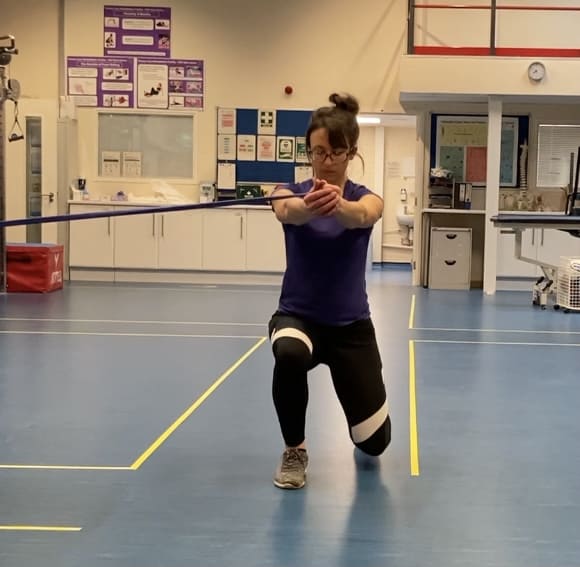
Hamstring walk out – six sets four reps and 60 seconds rest. This isolation exercise is for knee-dominant hamstring strength.
How: Raise your bottom off the floor into a bridge position until your knees, hips and chest are in line (make sure you don’t arch your back). On your heels, and keeping your bottom off the floor, take small steps out as far as you can control, and then walk back in to your starting position. Increase reps and sets for added difficulty.
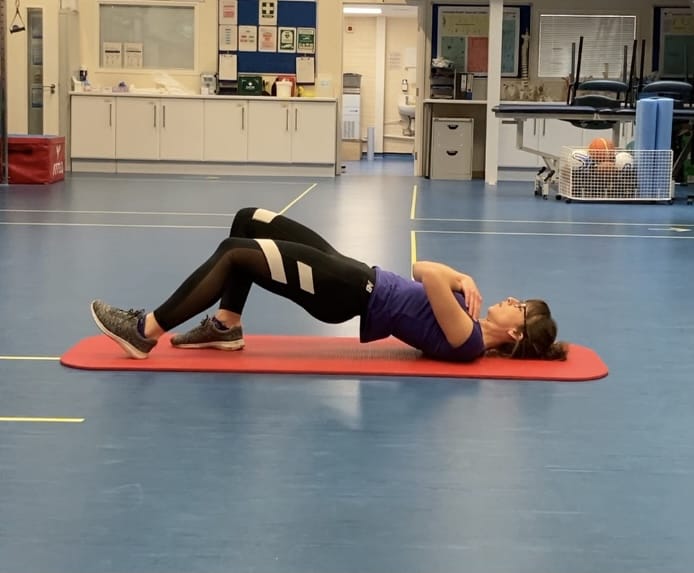
Single arm overhead carry – 20 paces, four sets and 20 seconds rest. Another compound lift that encourages trunk activation, targeting general stiffness and anti-side bending.
How: Use significant weight (around 8kg) to ensure your trunk is working. Hold the weight in one hand and your arm straight – work hard to not allow the weight to put you off balance.
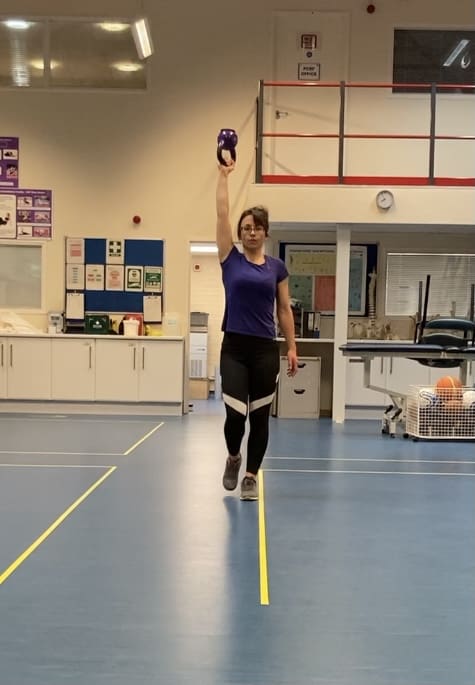
How often?
Aim to complete between two and five sessions per week. Generally, the greater your training experience the higher your tolerance will be to increased training frequency. Alongside your riding, and inclusion of CV sessions, 2-3 weights sessions will be plenty. Like your horse, you’ll need recovery days, too. This could involve low intensity walking, jogging, cycling or swimming – why not co-ordinate and go for a gentle walk in-hand or long-rein together?
For more horse and rider fitness tips, pick up your copy of April 2021 Horse&Rider, on sale now.




